Surviving My Survival of La Traviata
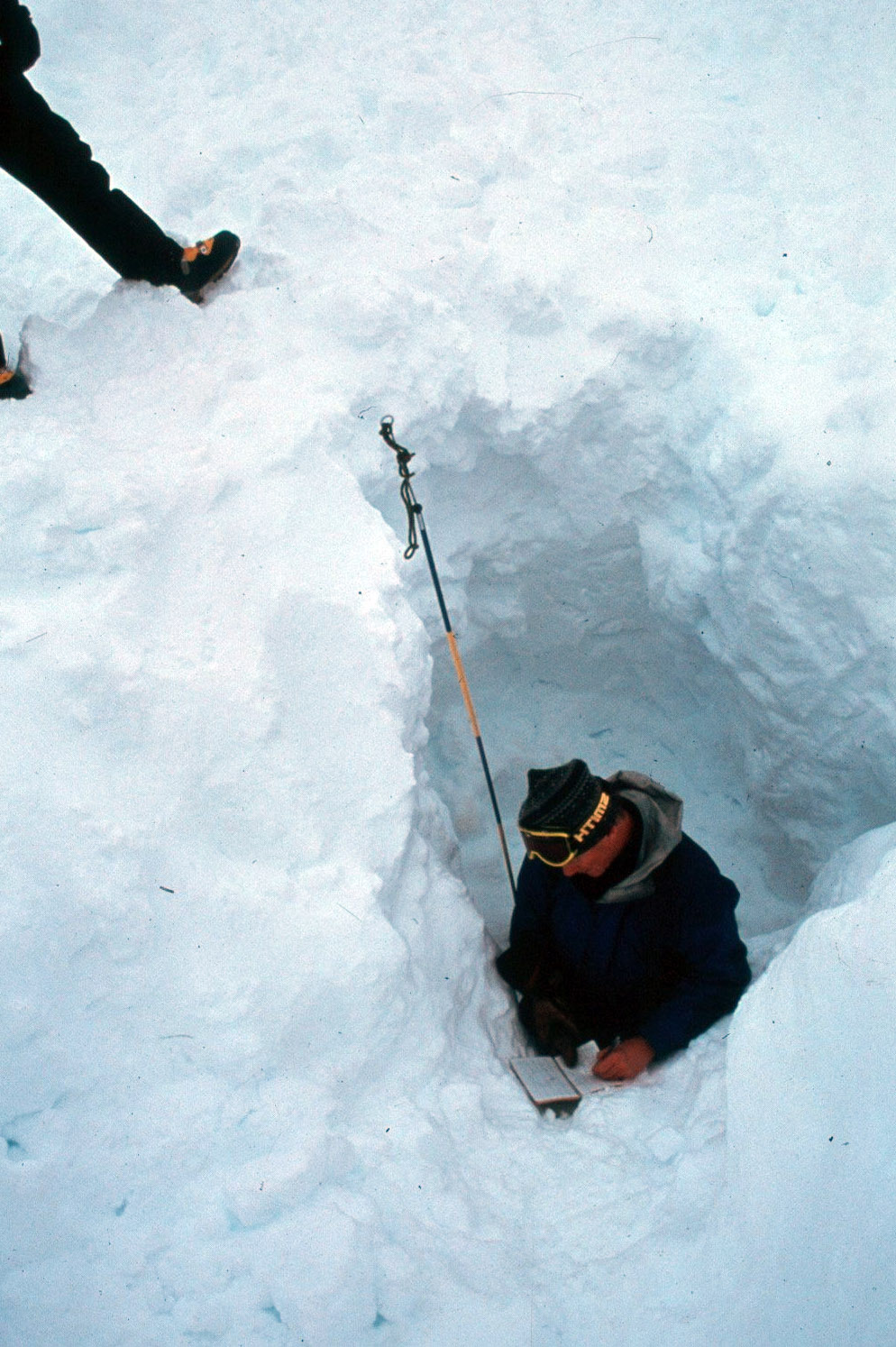
“What I was seeing was the response to a disaster and I wondered how I would survive being in part, its creator.”
Once the snow stopped sliding, there was a death filled silence. Eight rescuers recognized their task. Thirteen of their friends, staff and clients were below the surface of the snow. They went to work and responded to the unimaginable nightmare that was La Traviata. They dug holes by moving massive amounts of snow and reached the living and the dead. They performed CPR and tried their best to minimize the impact of the one of the worst disasters in Canadian mountain guiding history.
In time they reach me, a painless slap across my numb left cheek germinated some awareness. I took a deep breath and slowly awakened from emptiness. Visual inputs were diffuse and half-focused, as if I was looking through a distant blue haze. My limbs were dead with cold; muffled and muted sounds registered. More input came in: people in colored clothing, wielding shovels were blurred by their rapid movement. I pryed their names from my memory as they passed in front of my field of view. Age… John… Joe… Ron. Someone to my left spoke the words, “Ken, you’ve been buried for 30 minutes. We got to you quickly.” But intuitively I knew it was a lot longer.
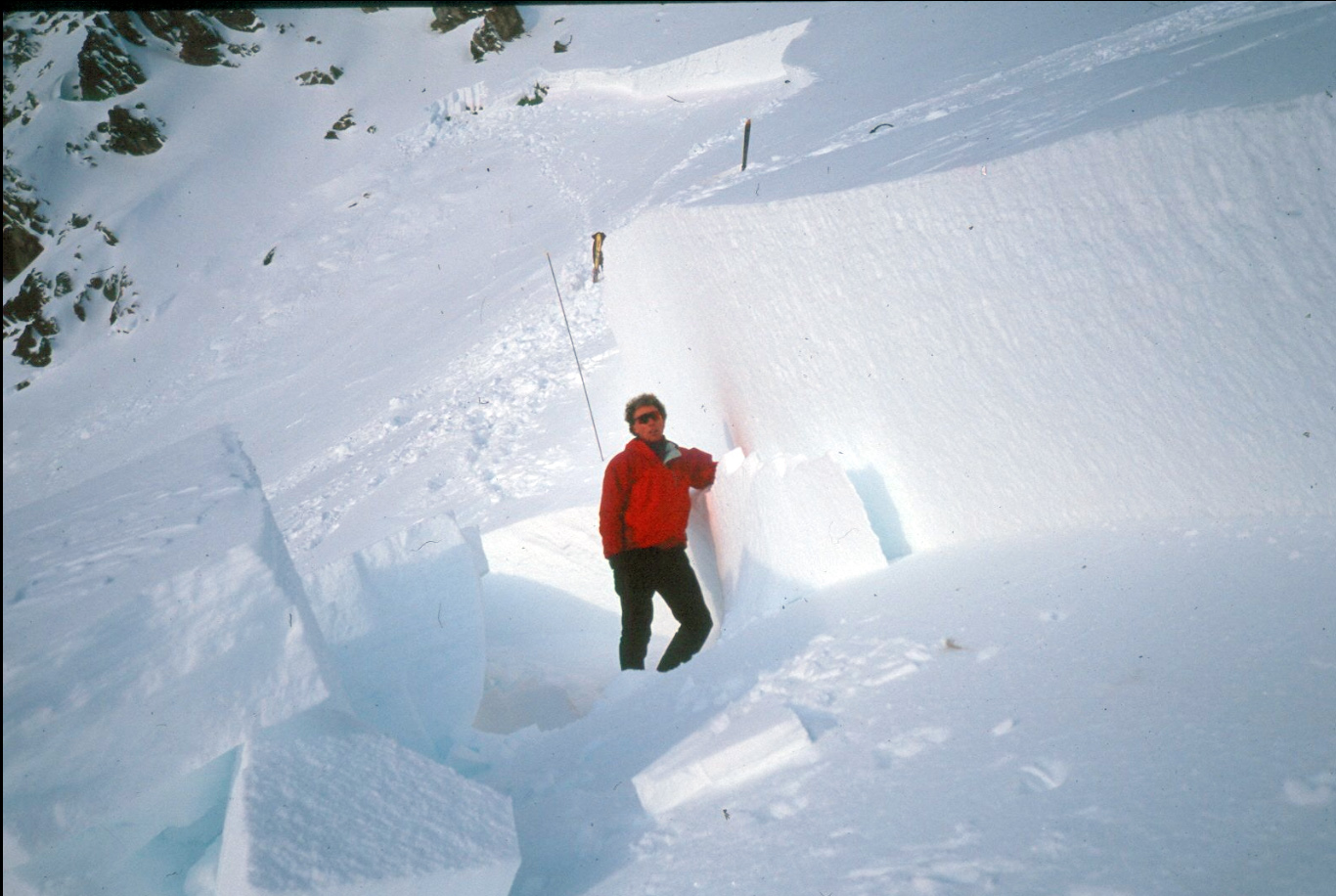
In the absence of knowing, I sensed that what has happened was bad. I had awakened to a nightmare; tears were just below the surface, as were anger, shame and guilt. I worked hard to keep a lid on it, to be strong. You would think that I would be jubilant that I survived. But it was the opposite. What I was seeing was the response to a big disaster and I wondered how I would survive being in part, its creator.
With the aid of two rescuers, one on each side of me, I tottered my way through the jumbled lumps of snow to a waiting helicopter. While I shivered uncontrolably on my flight out I heard, pouring through the radio headset I was wearing, that Dave was dead. It would take another 24 hours for the information that there were seven fatalities to reach me. Their names coaxed through desperate sadness, through a reluctant hand and onto a piece of paper on Paula’s lap. Dave, Naomi, Craig, Kathy, Vern, Jean Luc, and Dennis.
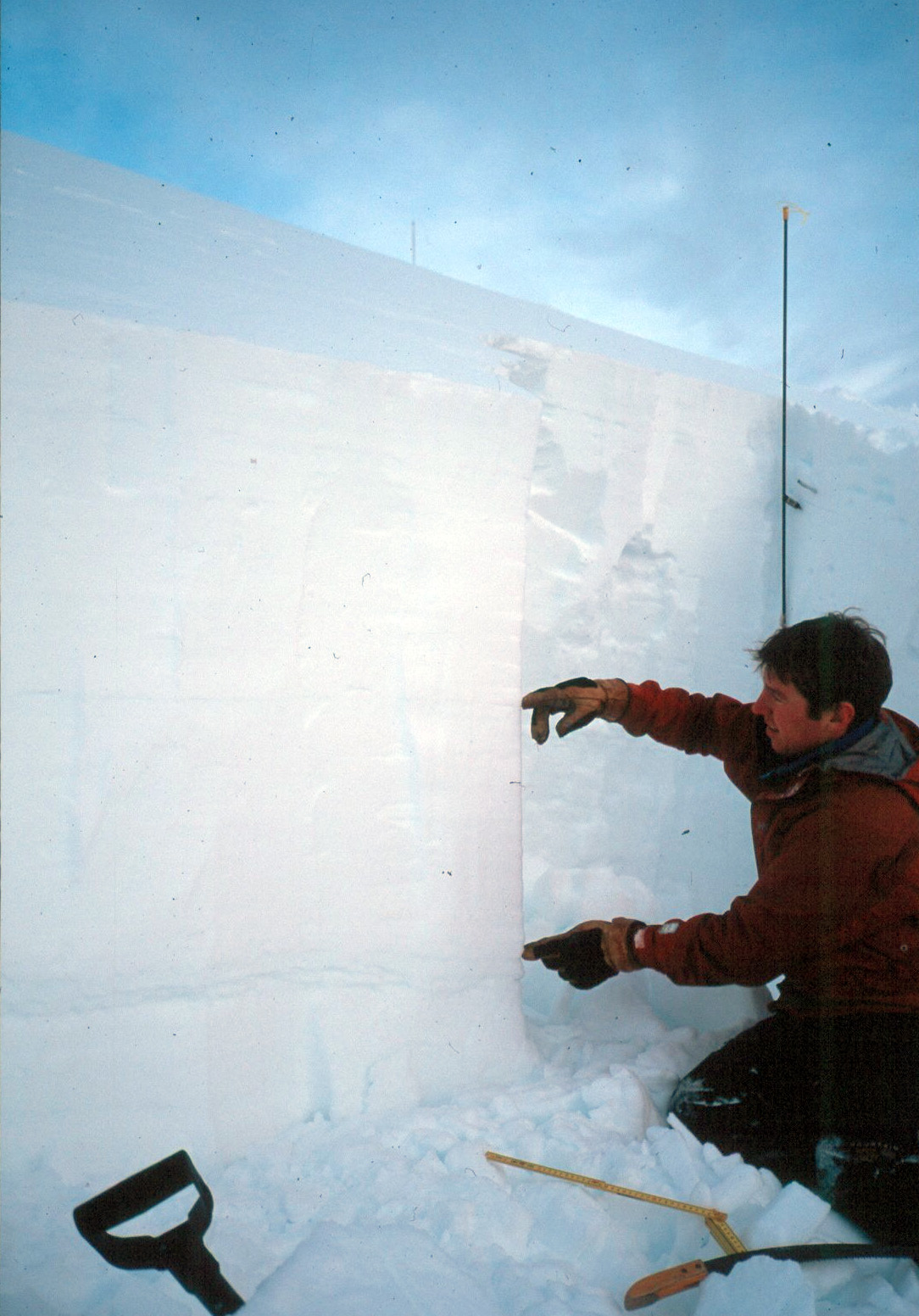
Nancy, who I was married to and the rest of my family naturally were happy that I survived. Nancy, threw a “Rebirthday” party days after the tragedy, where I pretended to be happy to be alive, which was incongruent with how I felt inside. I loved and mostly hated the attention. And when I attended my sister’s laser tag birthday party in Calgary a few weeks later, the name she chose for me on my digital identification tag was, “Miracle Boy”, rendering the same disgust and dissonance in me. While my family in truth were happy that I was alive, they failed to recognize the gravity and pain of the situation that I inhabited. Their happiness was for them, not for me. It is not that I wished I was dead, I just knew that I was in for a tough journey and these celebrations were asking something different from me. Something I could not be.
Deep down I knew, though I would not admit it at the time, that I was directly responsible for the death of Kathy, Vern and Dennis and causing unimaginable pain for countless others connected to them. I led them to their death. My families actions confirmed something chilling to me. . .that they could only provide profoundly superficial support, which they did in spades. But no one could provide support specific to what I had experienced. How could they? How many avalanche survivors are there in the world who were being paid to keep others safe, and failed so dramatically and publicly? Certainly not any that ever healed. The only path that had been well traveled was the one to the bottle. I aimed to heal.
Surviving, when others paid dearly for my choices, especially when I silenced their concerns, was a minefield that I had to walk through alone. Especially since the professional community I belonged to was covering it up. Using the media to say that, “Nature (was) to Blame” was the first clue. Rest assured I loved these statements at the start, but for me, they had no shelf life. I knew they were untrue, so I went searching.
I created a path to healing through the desperately frightful shadows and darkness, and I walked that path alone. No one understood. Counsellors encouraged me to blame the lead guide. Visionaries assured me that Kathy, Vern, Dennis and all of the others were okay on the other side. But there was something I needed to do. I had to understand my own darkness and how I made the choices that ended the lives of Kathy, Vern and Dennis. Writing Buried was part of that journey. By writing Buried I scratched the surface of why. Subsequent learning from the book I realized deeper, darker and more personal archetypical lessons. My fatal flaws;
I denied my better judgement.
I was too faint-hearted to speak up.
I isolated myself from my better aspects that could clearly see the hazards.
I rendered myself and my perceptions insignificant.
I strode forward onto the slope with hubris thinking only of my last guides exam.
I deceived myself and others, pantomiming that the situation was okay. I made myself look confident so my clients would follow.
I intellectualized that what I was doing was right.
And I led them all into chaos and Kathy, Vern, and Dennis to their death.
These are the specifics, and they are an indicator that I sold my soul to mountain guiding. The soul is the root of the best possible decisions. I will never sell it to the lowest bidder again.
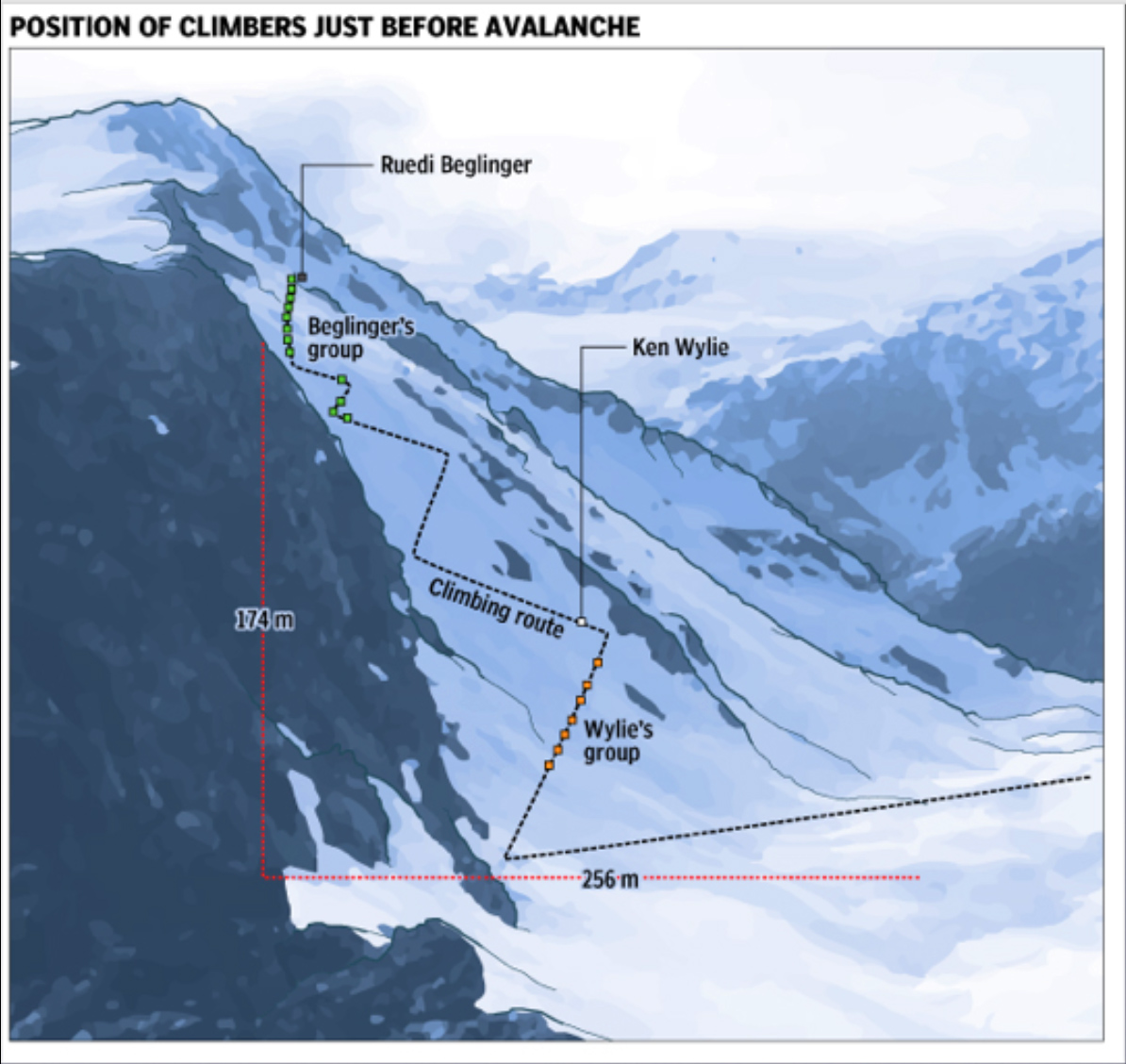
The apprehension of these ideas brought unexpected healing. There was now no stone left un-turned. No person can say anything about La Traviata itself that would cause me any pain, because I have owned it. There is still however, the pain of being silenced.
Days after the avalanche the lead guide held a hand up in my face when I tried speaking to him about my experience. He said, “I will tell you what happened.” When Buried was published, he publicly called me a liar in a Powder Magazine article. When I asked the executive director of the ACMG what to do about this and his reply was, “Nothing.” It also took me a year plus five minutes to get full access the the coroner’s images of the tragedy from the day after the event. The mountain guide hired by the coroner denied me for a year, since he took the pictures. But I finally realized that he was being paid by the BC coroner so he did not own the images that you see in this article. Chico Newell at the Kelowna Coroner’s office granted access to the photos in a five minute meeting saying, “people need to see and learn from these.” This was a breakthrough.
The loneliness of my perspective is an archetypical journey. I understand that. But it does not make it easy. Research on whistleblowers shows that things never end well for whistleblowers. This is the second tragedy of La Traviata. The equivalent tragedy to the space shuttle challenger blowing up in our community, and the the very people who need the lessons most, demonize the truth. This has been far more painful than anything else. The isolation, so searing that many times I contemplated ending my life`. But I will not. The hand keeps going up in my face even from people I would never have guessed. The ultimate tragedy however, is that it renders the lives lost at La Traviata meaningless. As an adventure educator, and a compassionate soul, this is beyond comprehension for me.
My hope was that I could survive my survival by making a difference. In many ways I have. The larger community gets the lessons I have put forward. But not the core group of people, and the culture that supported the behaviour that led to the tragedy. They keep having wrecks only to put a hand in the face of others. This is the third clue. I get what it is, they are scared plain and simple.
I have shared my lessons earlier in this article. But there are lessons that belong to the industry (that are also mine because I chose to participate in them.) Likely, they will fall on deaf ears by those who most need them. This is the culture, and the paying public should know it. But for those who are ready to listen, here they are. . .
My top ten lessons from La Traviata on this 20th anniversary. (The last two lessons are post incident response lessons.)
1) As a leader, you are never above basic common sense.
This is related to the fact that La Traviata was being ascended with one group ABOVE another exposing 21 people at the same time when there was a deep snowpack instability. The avalanche danger rating was “Considerable”.
2) Your ego is never more important than the well being of your clients.
Exposing 21 people to a deep snowpack instability all at the same time was nothing more than pure ego. It communicates that “prudence and humility are not needed by me.”
3) Erase individual voices, at everyone’s peril.
The day before La Traviata, I tried numerous times to better manage risk with my clients. Each time I was shut down by the lead guide. By the time we got to dealing with exposing ourselves to La Traviata, I was done trying to speak up. I erased my voice because I believed someone else could. This was a grave error on my part.
4) Always be sensitive to your group’s fear, there is wisdom in it.
The clients at La Traviata were scared of the terrain and the situation. Charles raced for the top and the snow fractured at his ski tails. Others raced edge to edge on the up track. Vern spoke to his fear and was not listened to by me. We failed to access this wisdom.
5) Deadly snowpack features are never run of the mill.
The November rain crust was underestimated at La Traviata. It was relegated to a run of the mill crust. I believed this assessment because I was an apprentice.
6) Hierarchies are unethical in environments where everyone lives with the consequences.
Each person that died and all of those that lived, survive with the consequence. Great leaders invite questioning before and after tragedy.
7) When there is someone in the group you are trying to impress, it can put everyone in peril.
There was a famous individual in the group. This changed all aspects of risk management.
8) Recognize when your familiarity with the terrain means that you are no longer seeing the hazard as it is.
The terrain that made up the run called La Traviata was never recognized as the death trap that it was. It was a terrain trap since the bottom was flat. Snow piled up at the base and was measured as much as 450 cm deep.
9) Poor choices are not nature’s (or God”s) fault and should never be labeled as such.
The headlines were captured, “Nature to Blame for Avalanche”. This forfiets learning.
10) The choices a leader makes that results in tragedy, obviously negatively affect the lives and careers of others.
Listen to these people without question. This is the only ethical thing to do.
Surviving my survival has not been easy. I have healed from La Traviata and the tragedy that it is. This is an unbelievably huge gift. I am still working on what to do about the fact that the mountain guiding industry in Canada had a world class disaster and has failed to capture the lessons in clear, transparent and meaningful ways. This is painful beyond belief to me. Perhaps, there is no healing from this grief because it is a willful blindness that is well beyond my control. But this does not make it right. The memory of Dave Finnerty, Naiomi Heffler, Craig Kelly, Dennis Yates, Kathy Kessler, Jean-Luc Scwendener, and Vern Lunsford deserve better.
There is one last lesson I need to share. Adventure is like a Marshall Amplifier. It amplifies whatever we put into it. La Traviata amplified the terribly unconscious and fragmented characters that were providing leadership. Had we been on a journey of awareness and humility, we would have amplified that, and would never have produced such a tragedy.
“Surviving Survival” is a term coined by Lawrence Gonzales in his book by that title. Recommended.
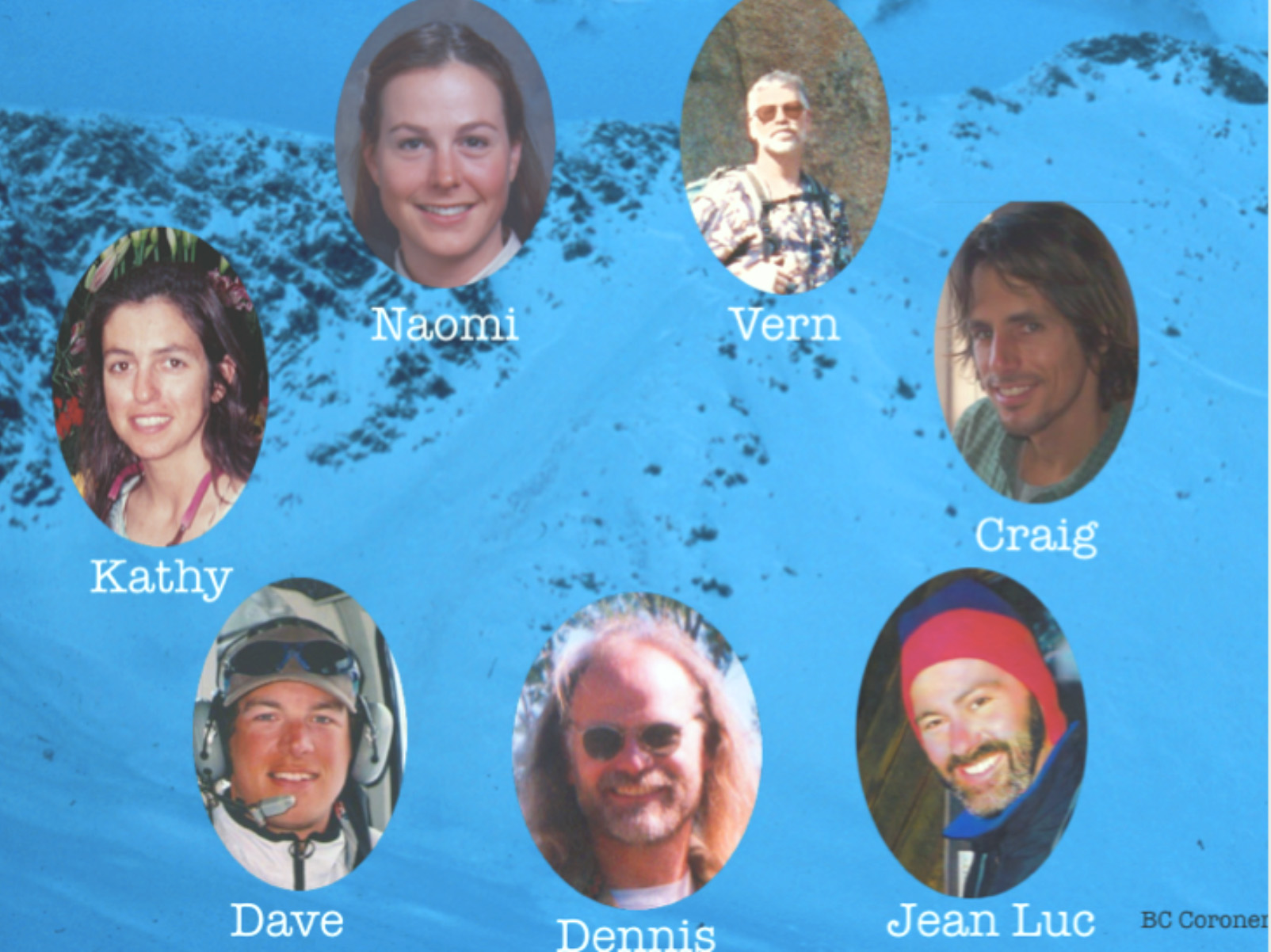
By Ken Wylie, January 2023
Ken teaches a human factor risk management course and watch for the publication of his second book in Fall 2023, “Dancing With The Abyss” The Journey Through Fragmentation to The Authentic Power of Wholeness. See more at archetypal.ca



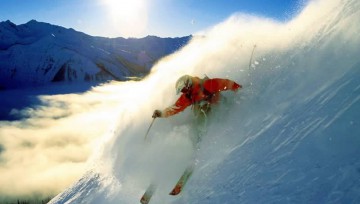






Comments